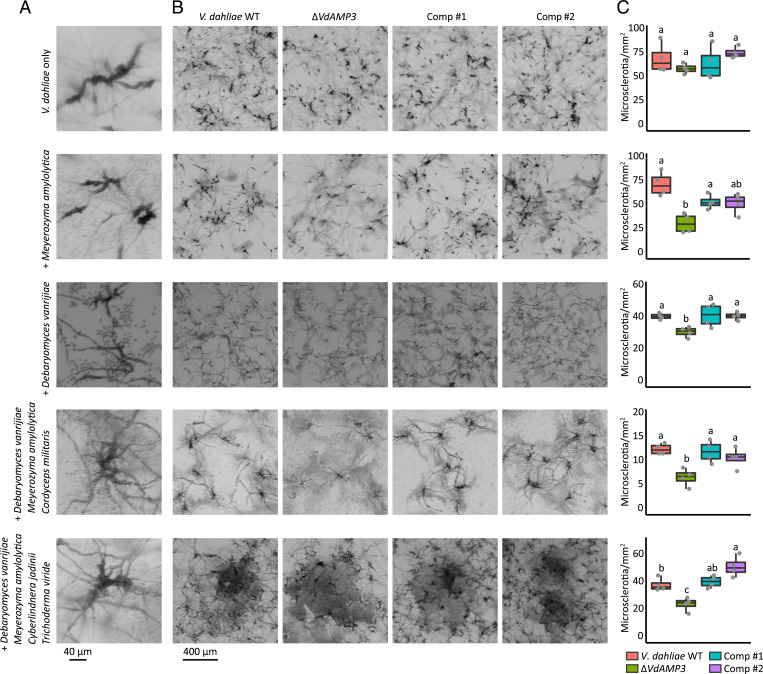Fig. 6.
VdAMP3 contributes to V. dahliae microsclerotia formation in the presence of fungal niche competitors. (A) Close-up of V. dahliae microsclerotia formed during cultivation in the presence of D. vanrijae (6 dpi), M. amylolytica (6 dpi), a syncom comprising D. vanrijae, M. amylolytica, and C. militaris (6 dpi), or a syncom comprising D. vanrijae, M. amylolytica, C. jadinii, and T. viride (9 dpi). (B) VdAMP3 contributes to V. dahliae microsclerotia formation in the presence of other fungal species. Representative microscopic pictures displaying V. dahliae WT, the VdAMP3 deletion mutant (ΔVdAMP3), and two complementation mutants (Comp) cultivated in the presence of the fungal species/communities as detailed in A. (C) Number of microsclerotia formed by V. dahliae in the presence of the fungal species or communities (one-way ANOVA and Tukey’s post hoc test; P < 0.05; n = 4).

